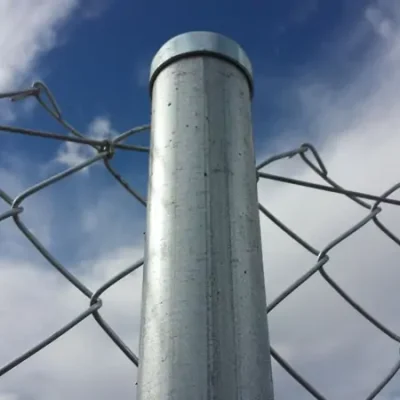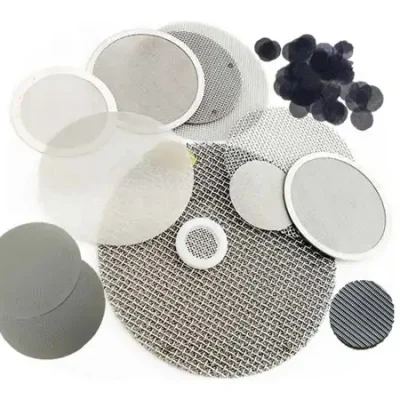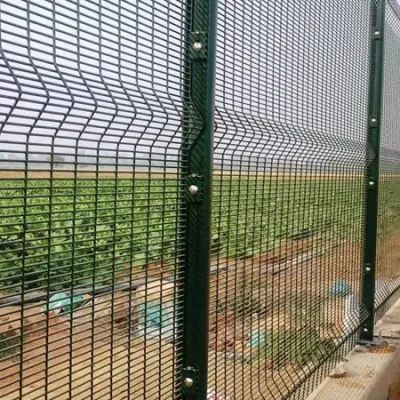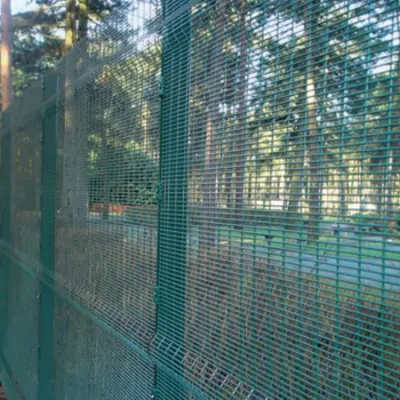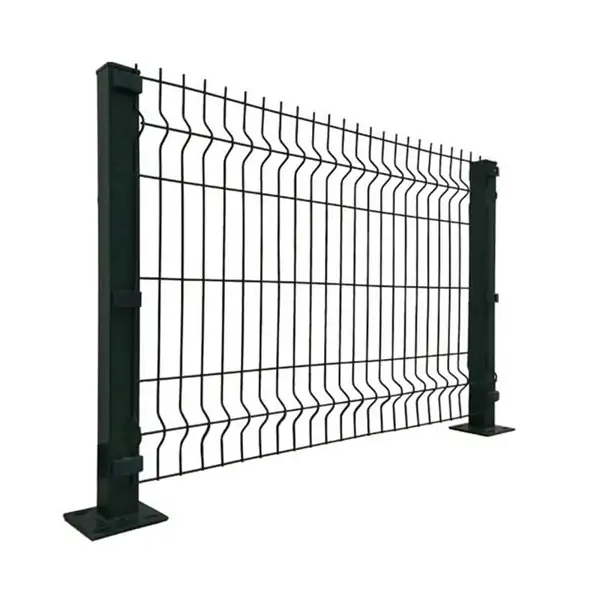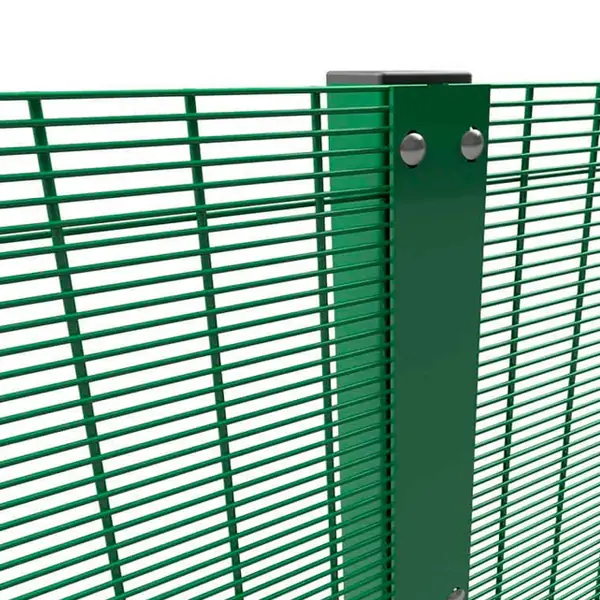Today we introduce a new type of animal trapping solution – Galvanized Collapsible Humane Animal Trap Cage. This trap cage combines durability, portability, and a user-friendly approach to safely capture and transfer animals. Its galvanized construction and collapsible design are game-changing for professionals and wildlife enthusiasts alike. Let us start from several aspects to understand the unique features and advantages of this trap cage.
Table of Contents
ToggleWhat is a trap cage?
A trap cage is a device used to trap and trap animals. It’s usually made of a strong material, such as metal mesh or wire, that prevents the animal from escaping. The trap cage has a trigger that triggers when the animal enters, causing the trap door to close, trapping the animal inside. The device is often used to catch pests, rodents or other animals that damage crops or homes. In some specific field environments, trap cages are also used to study and monitor the population and behavior of wild animals.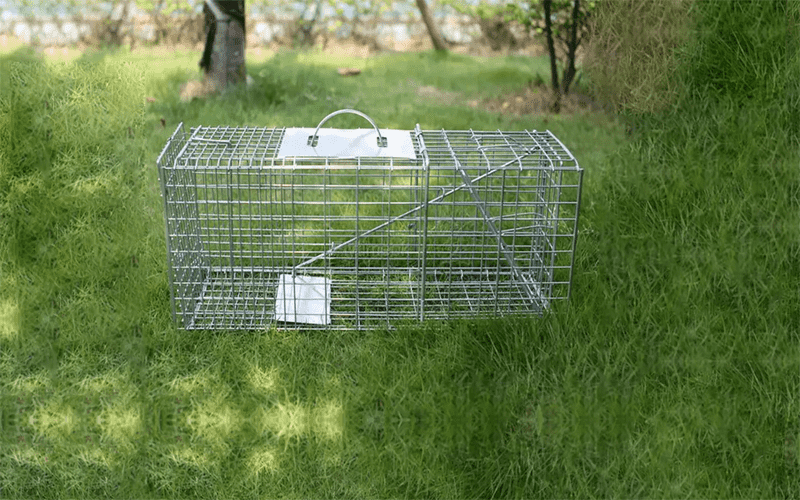
How is the trap cage used?
Using a trap cage involves a few key steps to ensure its effective and humane operation. Here’s how you can use a trap cage:
Select the Right Location:
Choose a location where the target animal is known to frequent. Look for signs of their presence, such as tracks, droppings, or damaged property. Place the trap in a quiet area to minimize stress for the animal.
Prepare the Trap:
Ensure the trap cage is clean and free from any debris that could interfere with its operation. If bait is required, place it inside the trap, preferably near the trigger mechanism. The type of bait will depend on the species you’re targeting.
Set the Trigger Mechanism:
Set the trigger mechanism according to the manufacturer’s instructions. Common trigger mechanisms include pressure plates, treadles, or levers. Test the trap to ensure it’s functioning properly before leaving it unattended.
Open the Entrance:
Make sure the entrance to the trap cage is open and unobstructed, allowing the animal to enter easily.
Check Local Regulations:
Ensure you’re in compliance with local laws and regulations for trapping animals. Some areas may require permits or have restrictions on certain species.
Monitor the Trap:
Regularly check the trap to prevent captured animals from being exposed to extreme weather conditions or predators for an extended period. Ideally, check the trap at least once every few hours.
Release or Transport:
Once an animal is captured, approach the trap calmly and avoid sudden movements that might startle the animal. If the animal is a non-target species or needs to be relocated, wear gloves to handle the trap safely. For target species, follow the proper procedure for relocation or release at an appropriate location.
Disinfect and Store:
After use, clean the trap cage thoroughly to remove any scents or traces of captured animals. Properly disinfecting the trap helps prevent potential diseases from spreading. If the trap is collapsible, fold it carefully and store it in a dry, secure place until its next use.
What are the pros and cons of trap cages?
Trap cages, also known as live animal traps, are commonly used for capturing animals in a humane manner. They have their own set of advantages and disadvantages. Here’s an overview of both sides:
Advantages:
Humane Capture: Trap cages are designed to capture animals without causing them harm or injury. This humane approach is especially important when dealing with wildlife or pest animals.
Selective Trapping: Trap cages allow for selective trapping of specific target species. This can be useful for managing pest populations while avoiding harm to non-target species.
Safe Handling: Trap cages enable safe and controlled handling of captured animals. This is crucial for preventing potential injuries to both the animals and the trapper.
Reduced Stress: When used properly, trap cages can minimize the stress and fear experienced by captured animals compared to other trapping methods.
Public Acceptance: The use of trap cages is generally more socially acceptable due to their humane nature. This can be important in urban or populated areas.
Research and Education: Trap cages are often used in scientific research and educational programs to study animal behavior, population dynamics, and ecology.
Disadvantages:
Accidents: Trapped cages may inadvertently trap pets or protected animals. This can cause ethical and legal issues to arise.
Weather and Predators: Using trap cages requires regular inspection of traps to prevent captured animals from being trapped for extended periods of time. If traps are not checked regularly, captured animals are exposed to harsh weather and predators.
Required Skills and Knowledge: Successful use of trap cages requires an understanding of animal behavior, trap placement, and the correct bait. Inexperienced users may have difficulty achieving the desired results.
Limited Capture Capacity: Trapped cages typically capture one animal at a time, making them less effective at managing large numbers of animals or infections.
Cost: High-quality trap cages can be relatively expensive, especially for larger or more specialized models. This initial investment may deter some users.
In conclusion, trap cages offer a humane and controlled method for capturing animals, particularly in situations where minimizing harm and public acceptance are priorities. However, careful consideration of their limitations, proper training, and adherence to ethical and legal guidelines are essential for successful and responsible trap cage use.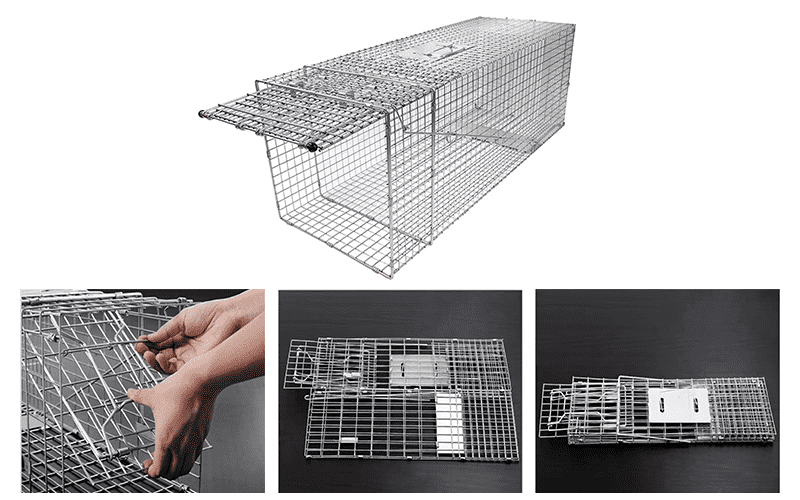
What are the main types of trap cages?
The main types of trap cages are as follows:
Box Trap: These trap cages feature a solid enclosure with one or more entry points, such as a swinging door or sliding gate. The trapped animal is unable to escape once the door closes behind it.
Collapsible Trap: These trap cages are designed to be collapsible, making them portable and easy to transport. They are usually made of wire mesh or similar materials and can be set up and taken down quickly.
Funnel Trap: This type of trap cage utilizes a funnel-shaped entrance to guide the animal into a confined area. The narrow opening leads to a larger enclosure from which escape is not possible.
Multiple-Catch Trap: These trap cages are designed to capture multiple animals at once. They often have multiple entry points or compartments, allowing for the trapping of several animals before the trap needs to be emptied.
Pigeon Trap: Specifically designed for the trapping of pigeons, these trap cages often have a larger size and unique design that works effectively for capturing these birds.
Rat/Mouse Trap: These trap cages are smaller in size and specifically designed to capture rats or mice. They often feature a trigger mechanism that closes the door once the rodent enters the cage.
These are just a few examples of trap cage types, and there may be variations or specific designs based on the target animal or purpose of trapping.
Which trap cage suppliers are there in China?
Here are some trap cage suppliers in China:
Hebei Anping YESON International Trading Co., Ltd.
Anping County Hengyuan Hardware Netting Industry Product Co., Ltd.
Changyi Huamei Plastic Co., Ltd.
Hebei Sinta Wire Mesh Products Co., Ltd.
Anping County Shengxiang Metal Products Co., Ltd.
Anping County Baiyi Metal Wire Mesh Products Co., Ltd.
Huanghua Xinrui Hardware Products Co., Ltd.
Anping County Xintaiyuan Wire Mesh Products Co., Ltd.
Anping County Hongda Industry & Trade Co., Ltd.
Hebei Baodie Wire Mesh Products Co., Ltd.
Anping County Baiyi Metal Wire Mesh Products Co., Ltd.
Please note that this is not an exhaustive list and there may be other trap cage suppliers available in China.
How to choose the right galvanized collapsible humane animal trap cage?
Choosing the right galvanized collapsible humane animal trap cage involves several considerations to ensure the safety of the animals and the effectiveness of the trapping process. Here are some steps to help you make an informed decision:
Identify the Target Animal: Determine the type and size of animals you intend to trap. Different trap sizes and designs are suitable for various species. Larger animals will require larger traps, while smaller animals may need more specialized designs.
Appropriate Trap Size: The size of the trap should be proportional to the size of the target animal. The trap should be large enough to comfortably accommodate the animal without causing harm, and the animal should not be able to escape from it.
Construction Material: Look for traps made from galvanized steel. Galvanized steel is durable, rust-resistant, and can withstand outdoor conditions. This is particularly important as the trap will likely be exposed to the elements.
Humane Design: Opt for traps that are designed to minimize harm to trapped animals. Look for smooth edges, rounded corners, and sturdy construction that won’t cause injury to the animal while it’s trapped.
Trigger Mechanism: The trap should have a reliable and sensitive trigger mechanism that responds to the animal’s presence. Common trigger mechanisms include pressure plates, treadle triggers, and one-way doors.
Ease of Use: Choose a trap that is easy to set up and doesn’t require complicated procedures. Collapsible traps should be easy to fold and unfold for transport and storage.
Portability: If you plan to move the traps frequently, consider their weight and portability. Collapsible traps are convenient for transport, but ensure that the collapsible design doesn’t compromise the trap’s sturdiness.
Escape-Proof Design: The trap should have a design that prevents the trapped animal from escaping or causing harm to itself. Check for secure locking mechanisms and mesh openings that are appropriately sized for the target animal.
Weather Resistance: Since the trap will likely be used outdoors, choose a trap that can withstand different weather conditions without rusting or deteriorating.
Reviews and Recommendations: Research online reviews and recommendations from wildlife professionals or experienced users. Their insights can provide valuable information about the effectiveness and durability of different trap models.
Legal Considerations: Make sure to research and adhere to local laws and regulations regarding trapping and relocating animals. Some species may be protected or require special permits for trapping and release.
Cost: While cost shouldn’t be the sole deciding factor, consider your budget. It’s important to find a balance between quality and affordability.
Warranty: Check if the trap comes with a warranty or guarantee. This can give you confidence in the product’s durability and quality.
Additional Features: Some traps come with extra features, such as bait compartments or handles for easier carrying. Consider these features if they align with your trapping needs.
Remember that the ultimate goal is to trap animals humanely and safely, so prioritize the well-being of both the trapped animals and yourself during the trapping process.



